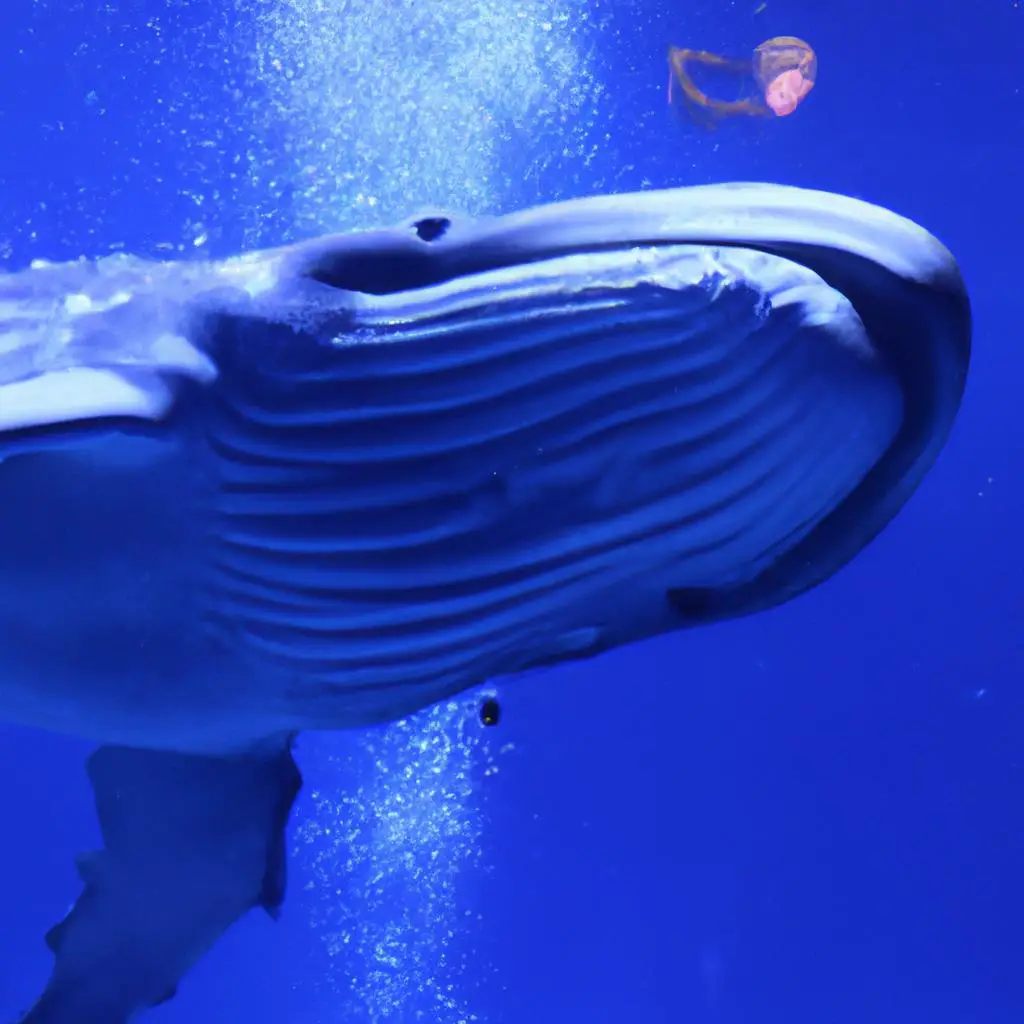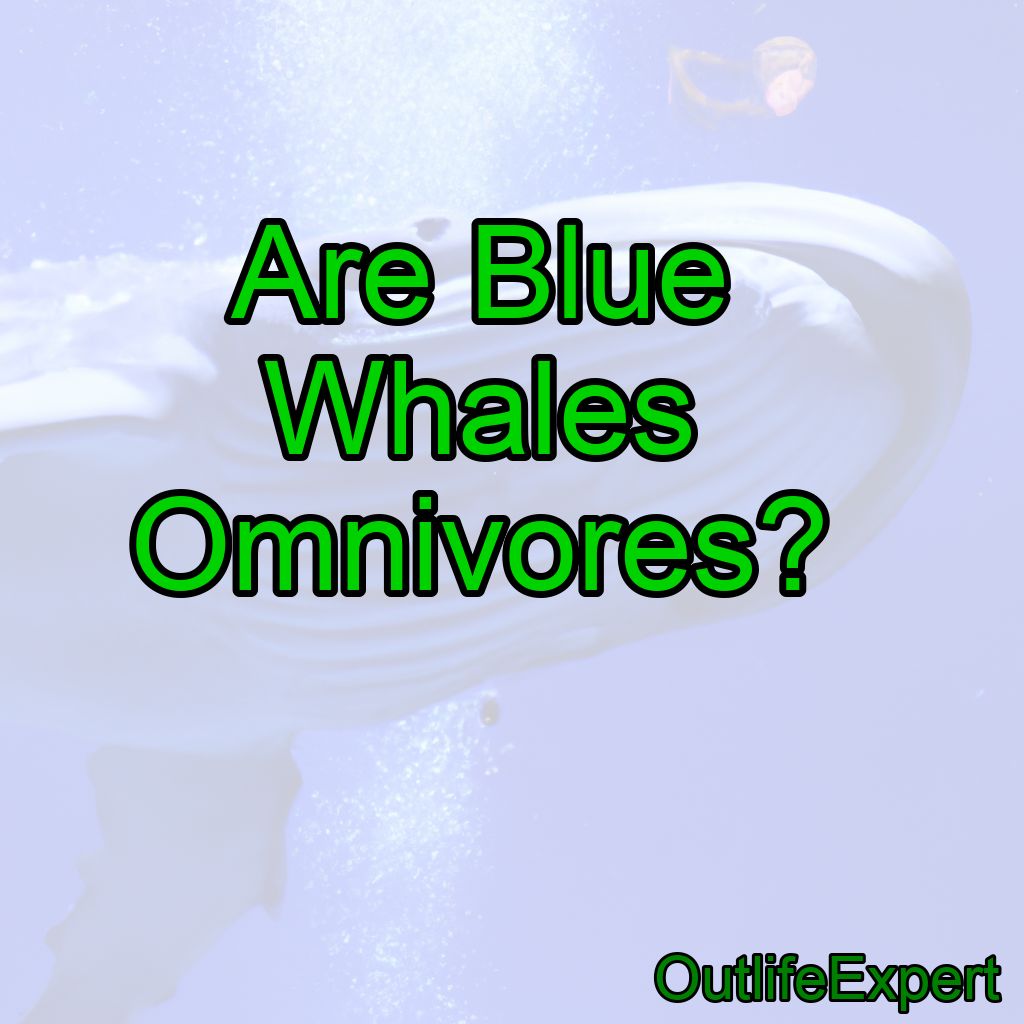Are blue whales omnivores? The short answer is no, blue whales are not omnivores. As the largest animals on Earth, these gentle giants have a diet that primarily consists of krill, making them filter feeders and specialized carnivores. However, their unique feeding habits and biology make them fascinating subjects of study. Throughout my career as a marine biologist, I have had the privilege of studying these magnificent creatures, and in this blog post, I will share my insights on their diet, feeding habits, and the ecological importance of blue whales.
Contents
Blue whale diet and feeding habits
What do blue whales eat?
Blue whales primarily feed on krill, which are small, shrimp-like crustaceans that live in large swarms in the ocean. Krill make up about 99% of a blue whale’s diet. They do occasionally consume other small organisms like copepods, but this is rare, and krill remain their main food source.
How do blue whales eat?
Blue whales are filter feeders, which means that they consume large amounts of water and filter out the krill using baleen plates. These plates are made of keratin, the same protein found in human hair and nails, and hang from the upper jaw of the whale. They are fringed with hair-like structures that trap the krill inside the whale’s mouth as it expels the water.
The lunge feeding technique
Blue whales employ a feeding technique called lunge feeding. This involves the whale accelerating towards a swarm of krill and taking in a large volume of water, which can be up to 110% of its own body weight. This engorges the throat pleats, expanding the whale’s mouth, and allowing it to take in a massive amount of krill in a single gulp. The whale then expels the water through its baleen plates, trapping the krill inside to be swallowed.

The role of krill in the blue whale’s ecosystem
The importance of krill
Krill are a vital part of the marine ecosystem, serving as a primary food source for many marine animals, including whales, seals, and penguins. They also play a significant role in the ocean’s food chain, transferring energy from primary producers (phytoplankton) to higher trophic levels. As blue whales consume vast quantities of krill, they have a significant impact on krill populations and the marine ecosystem as a whole.
Blue whales as ecosystem engineers
By consuming such large amounts of krill, blue whales can influence the distribution and abundance of their prey. This, in turn, affects the behavior and distribution of other marine animals that rely on krill as a food source. In this way, blue whales can be considered ecosystem engineers, shaping the structure and function of their ecosystem through their feeding habits.
Blue whale migration and its relationship to their diet
The seasonal migration of blue whales
Blue whales undertake long-distance migrations, traveling thousands of kilometers between their feeding and breeding grounds. They spend the summer months in high-latitude, nutrient-rich waters where krill are abundant, such as the Arctic and Antarctic regions. In winter, they migrate to lower-latitude, warmer waters to give birth and mate.
The impact of diet on migration
The blue whale’s dependence on krill as a food source drives their migration patterns. They must travel to areas with high krill concentrations to feed and build up energy reserves for their long journeys and breeding season. This makes them highly susceptible to changes in krill populations due to climate change or overfishing, which could potentially disrupt their migration and have severe consequences for their survival.
Threats to blue whales and their food source
Climate change and its effects on krill populations
Climate change poses a significant threat to krill populations, as rising sea temperatures and ocean acidification can impact their reproduction and survival rates. This, in turn, could have devastating consequences for blue whales and other marine animals that rely on krill as a primary food source.
The impact of overfishing on krill populations
Overfishing of krill for use in aquaculture, pharmaceuticals, and health supplements can also have severe consequences for blue whales. As their main food source becomes scarcer, blue whales may struggle to find enough food to sustain their massive bodies and energy requirements, leading to population declines.
Conservation efforts and the future of blue whales
The importance of protecting blue whales
As the largest animals on Earth and important ecosystem engineers, blue whales play a crucial role in maintaining the balance and health of the marine ecosystem. Efforts to protect and conserve blue whale populations are essential not only for their own survival but also for the well-being of the entire ocean ecosystem.
Conservation measures and international agreements
Several international agreements and conservation measures have been put in place to protect blue whales and their habitat, including the International Whaling Commission’s (IWC) global moratorium on commercial whaling and the Convention on International Trade in Endangered Species (CITES). Additionally, efforts to regulate krill fishing and establish marine protected areas are essential for the conservation of blue whales and their food source.
Conclusion
In conclusion, blue whales are not omnivores, as they primarily feed on krill, making them specialized carnivores and filter feeders. Their unique feeding habits, migration patterns, and the ecological importance of their diet make them fascinating subjects of study. By understanding and protecting these gentle giants, we can help preserve the health and balance of our marine ecosystems. Here are ten facts about blue whales and their diet:
1. Blue whales are not omnivores; they are specialized carnivores and filter feeders.
2. Their main food source is krill, small shrimp-like crustaceans.
3. Blue whales use baleen plates to filter krill from the water.
4. They employ a lunge feeding technique to consume large quantities of krill at once.
5. Blue whales play a significant role in their ecosystem, acting as ecosystem engineers.
6. Their diet drives their seasonal migration patterns, traveling to areas with high krill concentrations.
7. Climate change and overfishing threaten krill populations and, in turn, blue whales.
8. Blue whales are protected under the International Whaling Commission’s moratorium on commercial whaling.
9. Efforts to regulate krill fishing and establish marine protected areas are crucial for blue whale conservation.
10. Protecting blue whales and their food source is essential for maintaining the health and balance of marine ecosystems.
FAQs
Can blue whales eat meat?
No, blue whales are filter feeders and only consume small, shrimp-like crustaceans called krill. They do not eat meat.
What is the world’s largest carnivore?
The world’s largest carnivore is the polar bear.
Are all whales carnivores?
Yes, all whales are carnivores.
Is a blue whale a carnivore or omnivore?
A blue whale is a carnivore, meaning it only eats meat.
Can whales eat meat?
Yes, whales are carnivorous and can eat meat.
Is the blue whale the biggest carnivore?
No, the blue whale is not a carnivore. It is a filter feeder that feeds on small crustaceans called krill. However, it is the largest animal on Earth.




